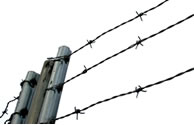Momentum gathers behind the UPC
June 2014
The Unified Patent Court project has moved forward considerably since the signing of the UPC Agreement in February 2013. We take stock of how much has been achieved and how much remains to be done before the court can open for business.
A little over sixteen months ago, on 19 February 2013, the representatives of twenty five EU governments met in Brussels to sign the Unified Patent Court (UPC) Agreement, creating a court in which future Unitary Patents and classical European Patents can be litigated in a one-stop-shop for the participating EU Member States. This historic date is – at last – the starting date for implementation of a project that has kept European lawmakers busy for almost forty years. Although few doubt that this project will now come to fruition, there is still some way to go before the doors of the UPC finally open for business. This article looks at progress since last year, the steps that still lie ahead and the decisions that need to be made:
Background: The patent reform package
The UPC is part of a bigger package of patent reform, which consists of three linked elements:
- the introduction of a Unitary Patent (Regulation 1257/2012/EU)1;
- special language arrangements for the unitary patent (Regulation 1260/2012); and
- a treaty on the Unified Patent Court (UPC) (International Law).
 In the current system, the EPC provides a centralised application procedure in which the European Patent Office (EPO) grants a bundle of national patents across Europe. Disputes about patents after grant (with the exception of those patents opposed at the EPO within the first nine months) are adjudicated upon exclusively by national courts.
In the current system, the EPC provides a centralised application procedure in which the European Patent Office (EPO) grants a bundle of national patents across Europe. Disputes about patents after grant (with the exception of those patents opposed at the EPO within the first nine months) are adjudicated upon exclusively by national courts.
In contrast, the new Unitary Patent will be a single patent covering all the ratified EU states (this currently excludes Italy, Spain and Poland2): it will be enforceable and revocable in all these territories simultaneously by the UPC. The Unitary Patent will thus represent a key component of the European single market, but will stand alongside the continuance of the existing system of "classical" European Patents and national patents.
As well as Unitary Patents, classical European patents will also be subject to the exclusive jurisdiction of the UPC; during a transition period of seven years, there is, however, the possibility to opt-out these patents from the exclusive jurisdiction of the UPC (see below). National patents, and European patents that have opted out, will remain actionable only in the national courts. The real power of the UPC is therefore its ability to revoke patents and issue pan-European injunctions across the ratified states.
The UPC will have a number of divisions across Europe: local and regional divisions making up a Court of First Instance together with a central division split between three locations – Paris, London and Munich. Appeals will be heard by an appeals chamber in Luxembourg.
Progress since February 2013
Rules of procedure
A key factor in the success of the UPC will be its Rules of Procedure. These provide the detail of how proceedings in the UPC will work for every kind of action the court is competent to hear. The Rules of Procedure are now in their 16th draft, published in March 2014 and, following a public consultation last year, have addressed many of the gaps and concerns identified as a result of that process.
Practical implementation by the Preparatory Committee
 A Preparatory Committee was established to deal with practical implementation of the UPC: it is responsible for managing the financial aspects of the court, its IT, facilities, human resources and training. It also has responsibility for issuing guidance on those legal issues that require urgent clarification before the court begins. In this capacity, it has already issued an "interpretative note" on the law that will apply to opted-out patents.
A Preparatory Committee was established to deal with practical implementation of the UPC: it is responsible for managing the financial aspects of the court, its IT, facilities, human resources and training. It also has responsibility for issuing guidance on those legal issues that require urgent clarification before the court begins. In this capacity, it has already issued an "interpretative note" on the law that will apply to opted-out patents.
A key area of progress overseen by the Preparatory Committee is the recruitment and training of judges. Having requested interest from potential judges on 30 November 2013, which request drew responses from well over a thousand interested persons (many of whom are already experienced judges), the Committee is now believed to have drawn up a list of preliminary candidates. In parallel the dedicated Training Centre that will function as a coordinating office for the training of judges and candidate judges of the UPC was officially opened on the 13 March 2014 in Budapest.
National progress in ratification and setting up of court divisions
A further major development since February 2013 has been the first four ratifications of the UPC. In total, thirteen ratifications will be needed before the UPC, and with it the Unitary Patent, can come into force. So far, Austria, Sweden, Belgium and France have ratified, with unconfirmed reports that Malta too has taken this step. France's ratification is particularly significant because, as with that of Germany and the UK, the UPC cannot go ahead without it. In the UK, the Intellectual Property Act 2014 which empowers UK ratification of the UPC Agreement has entered into force, and ratification is expected to follow by the spring of 2015 at the latest.
The third mandatory country, Germany, has not yet ratified. Nonetheless the Federal Minister of Justice announced in March 2014 that Germany will host local divisions in Düsseldorf, Mannheim, Munich and Hamburg, subject to final confirmation by the Federal Government. These local divisions will be in addition to the Munich branch of the central division.
On the 4 March 2014 Estonia, Latvia, Lithuania and Sweden concluded an agreement on the creation of a regional Nordic-Baltic division of the Unified Patent Court. This Nordic Baltic division will have its seat in Stockholm. The division will use only English as the language of proceedings. But notably absent from this regional division are Denmark and Finland. Finland's intentions are currently unclear, but the Danish people backed the UPC in a referendum in May 2014 promising that ratification should follow shortly and possibly a local division in Denmark.
Furthermore, progress has been made on how the new court will fit into the jurisdictional regime governing the national courts, particularly as regards which court is first seized of an action and the avoidance of duplicative proceedings. This is to be regulated by the lis pendens provisions of an amended Regulation (EU) No 1215/2012 on jurisdiction and the recognition and enforcement of judgments in civil and commercial matters. This Regulation will become fully applicable on 10 January 2015, well ahead of the expected opening of the UPC's doors.
Obstacles that remain
With all these developments, there are still a number of obstacles: from a practical point of view, these include IT, staffing and funding issues. Some critical issues that remain unsolved are more substantive and are likely to have a decisive bearing on the success of the UPC:  first and foremost, costs issues need to be resolved (fee for validation, fees for litigation, fee for an opt-out). There are presently no firm dates for decisions on any of these.
first and foremost, costs issues need to be resolved (fee for validation, fees for litigation, fee for an opt-out). There are presently no firm dates for decisions on any of these.
Whilst the 16th draft of the Rules of Procedure, described above, have clarified many matters, problems still need to be resolved on issues such as the language in which a statement of claim must be lodged. However, it is recognized that other details, such as the approach taken by the UPC to the grant of preliminary injunctive relief, and search and seizure, can only be worked out by the UPC judges themselves over time.
Last, but not least, it must not be forgotten that Spain remains opposed to the new system and two legal challenges await a decision of the Court of Justice of the European Union3. No predictions can reliably be made about the outcome of these actions and the disruption that might ensue if Spain's objections are upheld. But, even without this potential hazard, the Preparatory Committee has much to do before the UPC can become a reality. Indeed, the Committee has recently acknowledged that it does not expect the UPC to be operational until the end of 2015 at the earliest. A more realistic guess at the implementation date is probably during 2016.
Opt-out
However, despite the obstacles that remain, momentum is clearly building towards the day when the UPC will open for business. Therefore, it is imperative that patentees and their competitors now begin to assess how they wish to approach unitary patents and classical European patents in the UPC. In particular, this means addressing the issue of opt-out. To assist, we have prepared four articles this month addressing different aspects of opt-out:
 UPC opt-out and withdrawal: meaning and effect
UPC opt-out and withdrawal: meaning and effect- The procedure for opting-out and withdrawal
- Responsibility for opting out (and exclusive licensees)
- The effect of opt-out on SPCs
This article is based on a text first published by Globe Law and Business.
If you have any questions on this article or would like to propose a subject to be addressed by Synapse please contact us.


Paul England
Paul is a senior associate and professional support lawyer in the Patents group based in our London office.

"...to have a decisive bearing on the success of the UPC: first and foremost, costs issues need to be resolved."
"...it is imperative that patentees and their competitors now begin to assess how they wish to approach unitary patents and classical European patents in the UPC."

